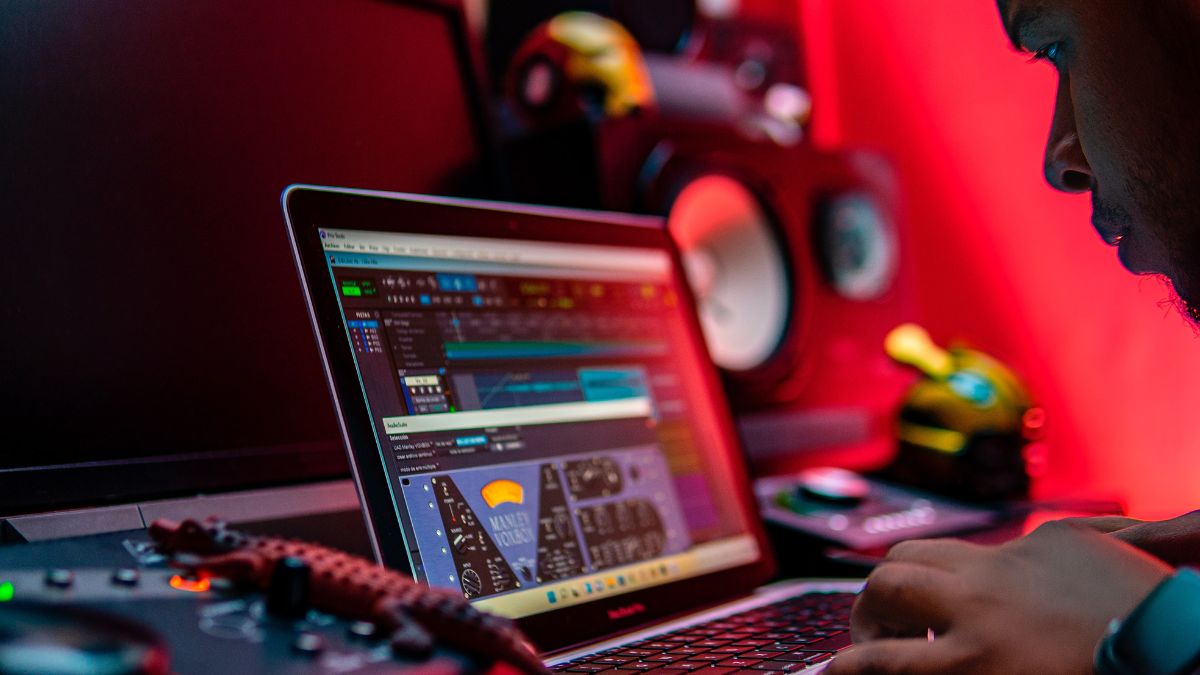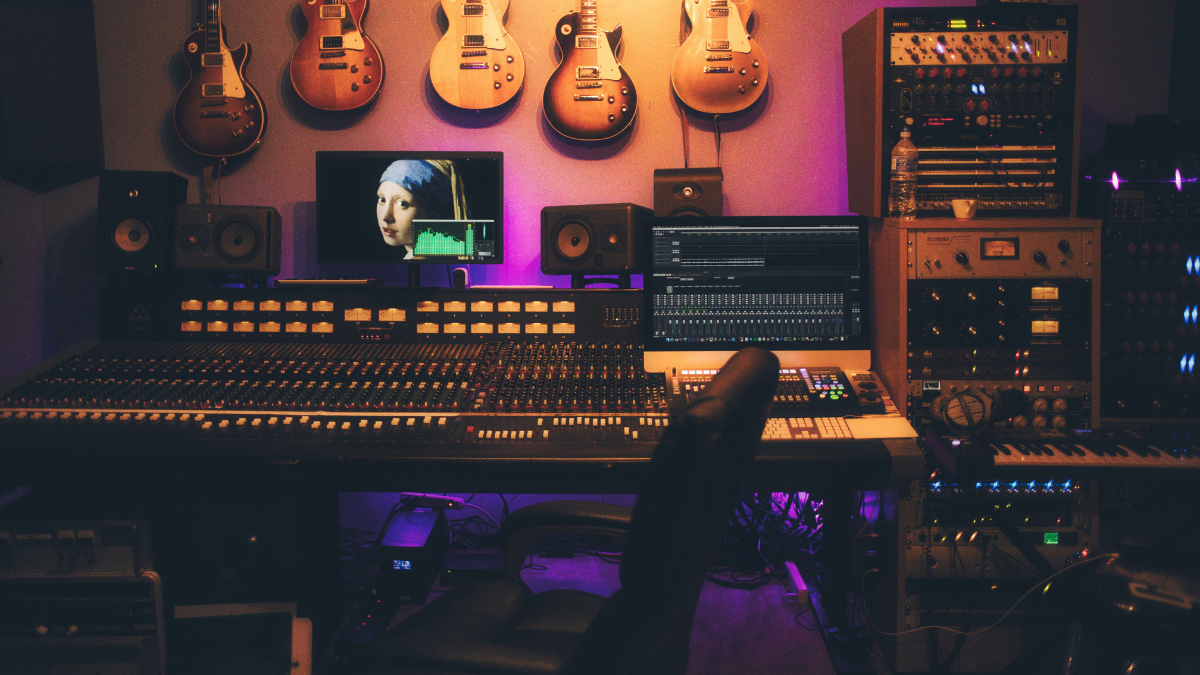Multiband Compressor: What it is and How to Use it for a Better Mix

Multiband compressors are an extremely powerful tool that can solve problems in mixes that can be difficult to fix by other means. They are, however, a little more complicated than regular compressors, making the task of understanding them seem intimidating.
To introduce you to this important processor, we’ll break things down piece by piece and explain multiband compression to you in simple terms.
We’ll explain this process and discuss how it differs from regular compression. We’ll break down the common controls you’ll find on a multiband compression plugin, and we’ll explain how to use one in your mixes. Finally, we’ll recommend some of the best multiband compressors on the market – including one that you can get for FREE.
Multiband Compression Vs. Standard Compression
Before we get into the details of multi-band compression, it’s worth reminding ourselves of the basics of standard compression. A compressor shrinks the dynamic range of a piece of audio, making the gap between the loudest and quietest parts of a signal smaller. Essentially it’s an automatic volume control that turns down the loudest parts of a sound. This has plenty of applications in music production, but the most common use of a compressor is to make a musical part more consistent in its dynamics.
A Multiband compressor is much like a regular compressor in most respects – you will still find controls such as threshold, attack, release, ratio, and knee present and correct. However, multiband compressors allow a much finer degree of control. A regular compressor will compress an entire signal by the same amount across all frequencies. With multiband compression we can get much more forensic with this process.
What is Multiband Compression?
Multiband compressors allow us to dial in compression at different levels across the frequency spectrum. If, for example, we only want to compress the bottom end of a signal, this process allows us to do that. At times, we might want to compress the bottom end, the mids, and the top end of our signal, but all with different settings. With a multiband compressor, we can set the attack, decay, and threshold for different frequency bands individually.
Why is this useful? Well, in fact, there are many uses for this process – the most common of which is correcting problematic frequencies. You probably already use one very specialized form of multiband compression in your mixes already – the de-esser.
This plugin is set to only catch and attenuate high-frequency sibilance caused by a vocalist singing S, Sh and F sound. The de-esser is a perfect example of why multiband compression can be so useful – it allows us to manipulate one part of a sound while leaving the rest of the sound alone. We only need to process the element that is causing a problem in our mix.
Understanding a Multiband Compressor
In addition to the normal controls you will find on a compressor, multiband compressors come with some extra features you will need to familiarise yourself with.
Frequency Bands
These are the defining feature of the multiband compressor – the individual, frequency-specific compressors that sit under the hood of one processor. Depending on the plugin you are using, the number of bands will vary – but it is not uncommon to see five or more. As each frequency band is essentially its own compressor, it therefore has individual compression controls that work independently of those on the other bands.
The bands have adjustable lower and upper limits so that you can define the frequencies at which they start and stop compressing. You will be able to switch individual bands on and off too – so that you are only compressing in the areas you wish to. This combination of controls allows you to decide exactly how much compression you want to apply across different parts of the frequency spectrum.
Spectrum Analyzer
Most multiband compressors include a spectrum analyser in the plugin’s user interface. This allows you to see how the changes you are making in the plugin are affecting the audio signal in real time. It’s an incredibly useful feature and one that you should look out for when selecting your multiband compressor.
Crossover Points
In audio, a crossover is a step of steep filters that are used to divide an audio signal at specific points on the frequency spectrum so that different frequency bands can be processed separately. A good example of this would be a sound system that has a separate speaker for the sub frequencies; the audio is separated out with a crossover and the lowest frequencies are sent to the sub.
In multiband compression, crossovers are used at the intersection points between the different frequency bands. It is important to set these points accurately so that you are only processing the parts of a signal you wish to.
How to Use Multiband Compression in Your Mix
De-essing is probably the most common use of multiband compression in mixes, but there are plenty more applications for this tool. It can be a very useful technique if you’re looking to compress an audio signal that contains multiple instruments – the instruments will often sit at different points on the frequency spectrum and may well need treating differently from one another.
Two examples of this kind of scenario would be; compressing on the master bus of a mix, or compressing a sample that contains multiple instruments (even a drum kit sample falls into this second category as a kick drum sits at a very different place to a hi-hat on the frequency spectrum).
Let’s use the example of a drum loop to explain how this process might be used; imagine a loop that sounds great but has incredibly loud cymbal crashes that are overwhelming in your mix. If you EQ the high frequencies out of the sample, then that will solve the cymbal problem, but you will also dull the hi-hats and possibly the top end of the snare. Using multiband compression, you can compress the high frequencies at a level where the quieter hi-hats won’t be compressed, but those loud crashes will be reined in, making for a smoother-sounding loop. Using multiband compression on your master bus can allow you to do things like taming the bottom end on a track with heavy bass – without squeezing the life out of the rest of the mix.
We’ve already mentioned that a multiband compression is a great tool for fixing problematic audio – with de-essing being just one example of this. Using a similar idea, we can fix issues such as resonant frequencies on any musical material. Sometimes, a vocal or instrument captured in a particular room can sound overly resonant in a specific frequency range.
Using multiband compression, we can compress in only this problem area – when the resonance occurs, the audio signal goes over the threshold that we’ve set, and it is attenuated. When the resonance isn’t occurring, the signal remains unaffected. Again this problem could be fixed with EQ, but multiband compression gives us an elegant solution that doesn’t process the audio apart from when it needs to.
The Best Multiband Compression VST Plugins
In some cases you may be lucky and find that you have a multi-band compressor bundled with your DAW. However, as this is not considered a ‘standard’ plugin, many DAWs don’t provide one. Don’t worry though, if budget is a problem we’ve got you covered with a great free product from Tokyo Dawn Records. If you do have a bit of cash to splash you may want to invest in one of the premium products listed below. Read on for more details on each.
iZotope Neutron
Neutron does far more than just multiband compression. It is in fact a powerful mixing suite with impressive Artificial Intelligence (AI) ‘autolearn’ features that can figure out rough settings for you by analysing a sound. Part of this suite is a very good multiband compressor – full featured with a great UI – that takes full advantage of Neutron’s AI capabilities. Neutron costs $399 but you can get big savings by buying it as part of a package.
Fabfilter Pro-MB
If you are just looking for a top notch multiband compressor then you can’t do much better than Fabilter’s Pro-MB. It’s available for $169 and is a typical Fabfilter product in that it sounds beautifully transparent and is intuitive and easy to use.
TDR Nova
Nova from Tokyo Dawn Records does a whole bunch of things including parametric equalisation, dynamic equalisation and broadband compression. One of its key features is a 4-band multiband compressor. Each band is full featured and individual bands can be bypassed if required. Best of all, you can download TDR Nova for FREE.
You may not have realised that you needed multi-band compression in your mixes – you may not even have realised that some of the problems in your mixes were fixable. However, thanks to this useful tool, you now have a great solution to all kinds of problems that can be thrown up by different mix scenarios.



Comments:
Jan 05, 2023
Jan 05, 2023
Jan 05, 2023
Login to comment on this post